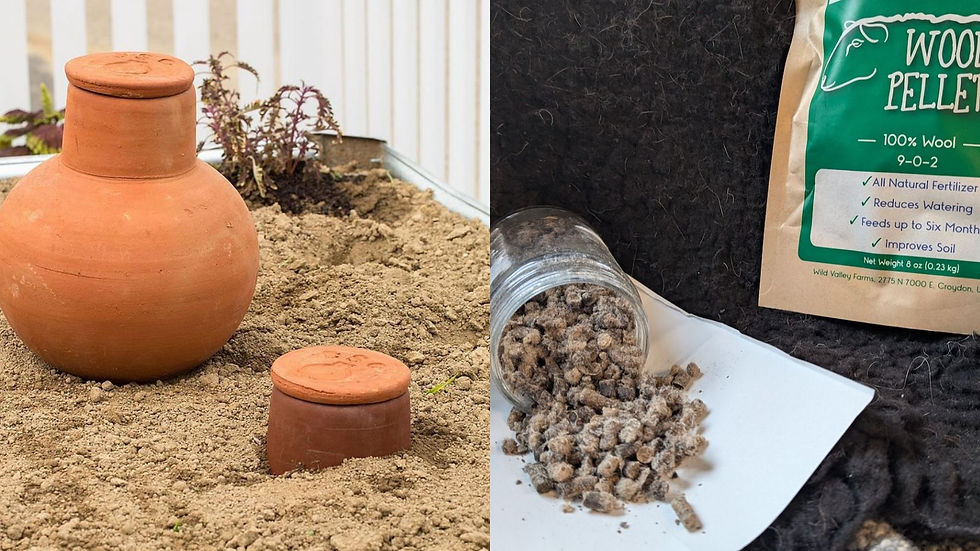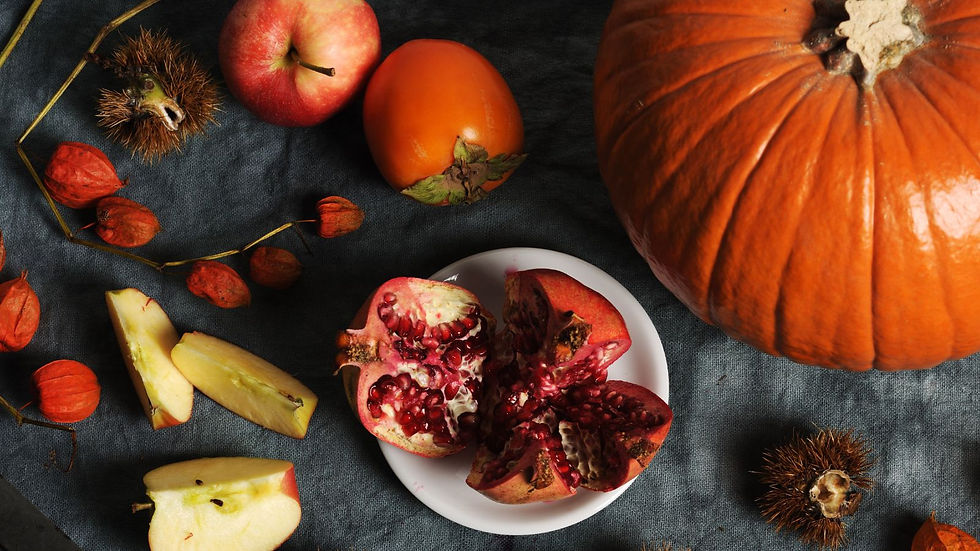Garden Heat Wave Prep
- b1415jimenez
- Jul 8
- 6 min read
Updated: Aug 20

This post is all about how to care set your plants up for success during the hottest part of the year! July will bring many days near or over 100 degrees and August is usually just as bad if not hotter!
“First, Do No Harm”- This phrase dates back to the ancient Greek! More known in the medical field, I think this phrase can be useful in a range of scenarios, including gardening; This time of year its best to not plant anything new, don’t prune existing trees, shrubs and do not apply fertilizer! Any young new tender growth is highest risk of burning so this is not a good time to try planting. Since fertilizer and pruning encourage new growth, its best to wait until fall.
Water Early - When you water in the middle of the day or mid-afternoon when the heat is at or near its strongest, more water is lost to evaporation before it gets a chance to get down into the soil and get soaked into the roots. Its better to water first thing in the morning or in the late afternoon. Personally, I do morning because in the afternoon your hose will likely still be warm, if not very hot and you want to water with cool water to reduce stress to the plants.
Water Deeply - No more lazy quick hose down just to get the task of gardening over with! Your garden NEEDS you right now! But of course, who has the time? Here are some simple ways you can step away from hand watering, its more simple than you think!
Screw a regular Lawn Sprinkler Head to the end of your hose! This is super simple, sprinkler heads can be just a few dollars and allow you to place it down and step away. While I'm revamping my garden space I've been using this method, i place the sprinkler head where i want it, set a 10-15 minute timer, move it, set a 10-15 minutes timer and repeat until I cover all my raised beds. On weekend mornings this is easy to do while harvesting, or tying up tomato plants, during the week I use the same setup while I'm inside cooking dinner or watching tv in the evening. I find if I hand water, standing in the same spot for 10+ minutes is really boring but watering deeply like this 3-4 times a week in the hot season is much better for the plants roots than watering lightly daily. The roots will grow deeper and stronger. Shallow watering leads to shallow weak roots that are more dependent on you for consistent water. Don't baby your plants!
Drip Setups: This is as elaborate as it gets, you can get really creative with a drip or sprinkler line setup! Think of this like Lego's for adults! You purchase everything separate at the garden center or hardware store depending on what you like but in general to start you will need; a hose end adapter, a hose end clamp, a spaghetti line hole puncher, hose cutter/or good knife to cut hose pieces. A roll of 1 inch or 3/4 inch drip hose, a roll of spaghetti line, a baggie full of the emitter of your choice, some are drip emitters, others are little mini sprinkler style emitters, you may also need elbows depending on what you plan to do.
I highly recommend watching a Youtube video of someone doing this and I hope one day I can produce a video like this for you because seeing someone do it in real life is very helpful. Growing up i watched my dad setup, fix and redesign garden irrigation this way for years and once you have it how you like, its very nice to be able to turn on the water and know everywhere you need is getting covered!
In the near future I'll be setting up my own drip setup, it'll have a Y-split at the hose end to connect the regular hose to the line, then it'll lay along the mulchy garden floor to the beds, where I'll use an elbow to direct the line up the side of the bed where it'll hit another elbow to go straight along the bed longways, this way everything will be very flush against the ground and bed to prevent tripping!
Soaker/Sweat Hoses: This is better than a hose end sprinkler but far less work than a drip line, the best of both worlds! Soaker hoses are made out of a porous material that 'sweats' the water out all over rather than out of holes. They don't last as many years as a drip hose because once they break down and get a tear or break somewhere they're no good but soaker hoses are very affordable to replace. They can be connected to either the spigot or the end of a hose and then laid down in the garden beds in loops, coils, lines, however you like! Since they emit slowly you can leave the water running for several hours without worrying about flooding the garden! I used them last year and put them away in the garage during winter to help them last longer.
Spiggot timers are easy to use and allow you to set it and forget it, just make sure there's no leaks and that the batteries are changed often to avoid accidents. You simply screw them onto the end of your spigot, screw the hose/drip line on to it. then turn on the water and set the timer. Some are as simple as a kitchen twist egg timer, others can be more elaborate and include weekly schedule setups so you don't even need to turn it on when you want it to run, so costs vary depending on what style you like. I use a simple twist dial kind so I twist it and when the time runs out it automatically shuts the water off!

Spaghetti line end Emitters on the left, Soaker/Sweat Hose on the Right
Water Retention- Providing water is great but go the next step by ensuring your soil is retaining as much water as possible. Often we hasty gardeners fill our garden beds with store bought sterile bagged soil, which can act really aquaphobic during the first season in the garden. Even if you accidently already filled the beds up with straight store-bought you can still add organic material now! When I see patches of garden that are drying out too quickly I put together a bucket of mulch and manure and top the spot with several extra inches, then I mix it into the top 4-6 inches the best I can without disturbing the roots of my existing plants. Here are some other ideas for water retention;
Sheep wool pellets are a unique and natural garden bed add-in, holding 3X their weight in water and releasing nitrogen as they break down! Win win!
‘Olla’s' are terra cotta pots that are meant to be ‘planted’ into your garden bed and filled with water so that the surrounding soil absorbs the water as it needs it. You can make your own Olla cheaply using a terra cotta pot and saucer!

'Lehman' Brand Olla Pots and Wool Pellets
Simple Shade – I’ve never personally had to bring it to this level but if you happen to have some tricky delicate plants that need special care, shade cover may be necessary. This can be done lots of different ways both elaborate and simple. Some folks use fabric between garden stakes to make mini-shade sails, others simply fold a piece of cardboard in half to make a tent! If you don’t have shade cloth around you can experiment with leftover weed cloth, old t-shirts, tea towels, bed sheets or burlap sacks!

Container care – If you have several small moveable pots or planters, keep an eye on them! These little pots don’t hold as much water and therefore dry much faster
Move them into the shade
Group them together, this means less sun directly on all the pots, keeping the center pots cooler and reducing evaporation
Check them 1-2 times daily
Learn to read the signs – Plants sill show signs of stress through drooping downward or in extreme cases becoming discolored. As you tend to your garden, look around, pay attention and you’ll start to gain an understanding of how they're showing their feelings. On an extreme hot sunny day, even if the soil is perfectly moist, some plants will still droop down a bit during the hottest part of the day and recoup at night, so a droopy plant doesn’t always mean it needs a drink. Overwatered plants are ‘drowning’ because their roots need oxygen and will show that stress through blotch yellow coloring in the leaves. Once you know these signs it’s easier to act accordingly.
I hope this post was helpful to you and that you learned something new! Share in the comments below your thoughts, ideas, questions and more! What it your watering routine looking like this summer?








Comments